Homemade diets – good or bad? (가정식 - 좋은가, 나쁜가?)
임상 현장에서 수의사는 반려동물에게 가정식을 먹이고 싶어 하는 보호자를 만나는 경우가 많다. 이 글에서는 가정식 급여가 가져올 수 있는 잠재적 위험과 유익을 모두 살펴본다.
고양이의 치아 위생을 위한 가장 좋은 방법은 적극적 구강 관리법과 소극적 관리법을 모두 활용하는 것이다. 시판 중인 일반적인 구강 관리용 건사료는 그 자체만으로는 고양이의 구강 건강에 거의 또는 전혀 유익하지 않다.
돼지고기는 고양이가 섭취하기 적합한 단백질과 지방 공급원이며, 고양이 사료에 조리된 돼지고기를 포함하는 것은 금기 사항이 아니다.
고양이에게 간식, 특히 사람이 먹던 음식(table scraps)을 너무 많이 주지 않도록 한다. 간식은 동물의 일일 급여량의 10%를 초과해서는 안 된다.
고양이에게 아무 때나 임의로 먹이를 주는 것은 좋지 않다. 보호자는 정확한 일회 급여량을 하루 동안 일정한 간격으로 몇 번에 걸쳐 제공하도록 한다.
고양이는 각종 전설과 민담에 가장 흔히 등장하는 동물 중 하나로, 종종 그 천성이 신비롭고 고집이 센 것으로 묘사된다. 따라서 (전설과 민담에 등장하는 고양이가 아닌) 실제 우리 주변의 고양이에게 필요한 영양학적 요구에 대하여 혼란을 야기하는 이야기, 반쪽짜리 진실, 때로는 순전한 오류가 많은 것은 어쩌면 당연지사일지도 모르겠다. 이 짧은 글에서는 인간이 가장 좋아하는 반려동물인 고양이에게 먹이를 주는 것과 관련된 잘못된 믿음과 진실을 구분하고자 한다.
Karolina Hołda
It is commonly believed that feeding dry food will reduce the amount of plaque and tartar on a cat’s teeth, and that it offers significant benefits in terms of oral hygiene when compared to feeding wet food. Certainly, chewing on hard kibble or croquettes seems to cleanse the teeth; as the animal chews on dry food, the pellets break and crumble, causing a little mechanical cleaning. In addition, dry kibble leaves less food residue in the mouth for oral bacteria to feed on, and plaque builds up more slowly. Nevertheless, many animals given dry food will still have an abundant build-up of plaque and tartar and suffer from periodontal disease 1,2, so the evidence as to the benefits of feeding dry food can be confusing.
One study has shown that companion animals fed soft foods had more gingivitis and plaque when compared to those that were offered harder foodstuffs 3. Another study that contrasted homemade diets to commercial (wet and/or dry) foods found that feeding cats a home-cooked preparation increased the likelihood of oral health problems, and reported that offering commercial diets (as compared to homemade recipes) was of significant benefit when dry food constituted at least part of the ration 4. A further study also demonstrated a lessening in the levels of periodontal disease and tartar, along with a reduction in lymphadenopathy, in cats fed a dry diet compared to those given soft meals (either home-prepared or commercial) 5. Nevertheless, other case studies have found that moist foods have a similar effect on the build-up of plaque and tartar as an average dry diet 1,6. Importantly, it should be noted that dry commercial foods typically break down at the edges of the incisor teeth, which is of little or no use for improving oral hygiene, because the plaque and tartar deposits at the gingival borders and in the subgingival areas (i.e., the most important regions for dental health) remain unaffected 7,8.
Given that two thirds of cats over the age of two show signs of periodontal disease 5, it is not surprising that some commercial dry foods for adult cats have been developed which demonstrate an improved oral cleaning capacity when compared to typical dry maintenance foods. These “dental diets” have a consistency that maximizes contact with the teeth, with kibbles that are shaped, sized and textured to help control plaque and tartar 9. Many dental diets also contain ingredients that help prevent plaque and tartar accumulation, and certainly VOHC®*-approved products do have a proven benefit for oral health.
* Veterinary Oral Health Council
Dental diets, as well as supplements and snacks for tooth cleaning, are a form of passive oral hygiene, as opposed to methods that deliver active oral hygiene, whereby the owner removes plaque by brushing the teeth and/or applying gels to the oral cavity. Passive methods alone will not keep the gingiva clinically healthy, as animals do not use all their teeth when chewing a dental product – and even for the teeth that do come into contact with the product, the entire surface of each tooth is not involved with the chewing action, so many areas within the mouth are neglected. In fact, the passive action of dental chews is most effective on the premolars, because the animal mainly uses these teeth to bite (Figure 1), whereas active methods are more effective on the incisors and canines, because the owner finds it easier to access the front teeth 10.

그림 1. 고양이는 치아 건강용 덴탈츄를 씹을 때 주로 소구치를 사용한다.
Credit: Shutterstock
The best method of maintaining oral hygiene is still to brush the teeth daily, which reduces the amount of bacterial plaque, although it can be a major challenge for many owners (Figure 2). While the notion that dry food helps cleans teeth is appealing, it appears that most dry maintenance foods by themselves do not significantly reduce the risk of periodontal disease. Certain dental preparations may have some benefits, but they must be products that also clean the subgingival areas, and when recommending nutritional dental products to clients it is best to choose those that meet the high requirements of the VOHC® 11. Ultimately, the best way to keep a cat’s mouth healthy is to combine active and passive methods, with regular veterinary dental care, which starts with excellent communication between the clinician and the cat’s owner!

Figure 2. Daily tooth brushing is an active method of maintaining good oral hygiene.
Credit : Philippe Hennet
Pork is a good source of protein and essential amino acids, yet there is a common myth that it should not be fed to cats. Certainly, pork has a high-fat content, so this must be taken into account if using it as a basis for a diet. It is a popular constituent in both dry and wet commercial foods – as meat, skin, fat, offal or meal – as it serves as a concentrated protein source. The poor reputation of pork is mainly linked to a virus of the Herpesviridae family which causes Aujeszky‘s disease (also known as pseudorabies). This is an infectious disease found in both farmed and wild animals, mainly pigs, but cats (and dogs) can contract the disease by eating raw infected pork 12. Affected animals develop signs that are mainly linked to the nervous system: paresis, paralysis, and severe itching that leads to self-harm. Whilst humans are not susceptible to infection with this virus, the disease is unfortunately fatal in cats.
Control of Aujeszky‘s disease is generally led by a country’s national veterinary service, with ongoing disease-monitoring in pig herds performed by taking random blood samples for testing. The number of reported outbreaks is currently steadily declining, and many European regions have been officially declared free from the disease. However, according to the European Advisory Board on Cat Diseases 13, the incidence of Aujeszky‘s disease infection in wild boar may be high in Western Europe (Figure 3), and the virus is still sporadically found in hunting dogs, although this in itself does not represent an increased risk of the virus contaminating cat food.
Importantly, it is advisable to cook all pork before giving it to pets, as this destroys the virus and renders the meat safe. However, the author advises against feeding cats with pork products intended for humans; this is because all kinds of ham, sausages and cold cuts, although manufactured from cooked pork, usually have a high-fat content, and they also contain preservatives such as sodium nitrite and phosphates, which are potentially harmful to animals. In short, highly processed animal products from the human table do not constitute a healthy snack for a pet cat.

Figure 3. Wild boar are common in certain parts of Western Europe and can act as a reservoir for Aujeszky‘s virus.
Credit: Shutterstock
Most owners know that some foods from the human table can be toxic to dogs and cats – for example, onions and garlic (which are often used in cooking sauces), or raisins and chocolate which – although commonly eaten by humans as a sweet snack – can be toxic and even fatal for pets. Feeding table scraps is also not recommended for other reasons. Human food is often highly seasoned (e.g., with salt, pepper, or spices), and ready-to-eat, processed foods (as noted above) also contain constituents that may adversely affect animal health. In addition, human food is usually fat-rich, and therefore high in calories, and unbalanced in terms of a cat‘s nutritional needs. Food intended for humans certainly cannot and should not form the basis of an animal‘s diet. If an owner really wants to give their cat something “from their plate”, the clinician should advise that the food does not contain any toxic ingredients and that all snacks are served in moderation. It is important to recommend that the number of treats between meals does not exceed 10% of the daily caloric dose, as otherwise this will quickly lead to obesity; in addition, an excess of snacks will result in an imbalance in the basic diet, which may cause deficiencies or excesses of individual nutrients.
The owner needs to be aware that human food is also not recommended for behavioral reasons. When cats learn that they can get something tasty from an owner, they will beg and/or refuse to eat their staple food in the hope of getting something “better”. It is also worth counselling that any member of the household may inadvertently slip into bad behavior that encourages this trait – for example, a child or grandparent may secretly feed the cat every time they open the refrigerator door to get milk for coffee or tea (Figure 4).

Figure 4. Household members may get into the regrettable habit of feeding the family cat every time they go to the refrigerator; this can lead to the cat becoming accustomed to being fed every time they hear the door being opened.
Credit: Shutterstock
Obesity is an incredibly common phenomenon in pets for several reasons, but not least because owners compare a cat’s excess weight to their own situation. If a person puts on a single extra kilogram, the physiological difference is minimal; for a cat that usually weighs 5 kg, if it gains “only” 1 kg, this is a 20% increase in body weight, which puts it in the obese category. In this situation it is worth explaining what the equivalent of excessive kilograms would be in a human, in order to make the owner aware of their distorted perception – for example, if a woman weighing around 55 kg was to gain an extra 20% (11 kg), she would definitely notice the difference in her bodyweight. A good solution that helps client education is to hang a poster in the consult room of the veterinary clinic which shows the caloric content of snacks commonly fed to cats (Figure 5). This allows the clinician to emphasize that what we would regard as a “small snack” actually represents a significant calorie intake for the cat, and can help the owner to understand that giving a small cube of cheese for their pet is comparable to a human eating (say) a double hamburger. It cannot be over-emphasized that research indicates overfeeding (i.e., ad libitum and snacking) and low physical activity are the main causes of obesity in cats 14.
Figure 5. Contribution of treats to daily energy intake.
When an owner gives treats on top of the daily food ration, this drastically increases the overall daily energy intake*. This has the potential to cause weight gain in cats fed at maintenance levels, and slow/stop/reverse weight loss in cats on a weight management program. Below are few examples illustrating the potential effect of treats on food intake.
Credit: Marianne Diez – Veterinary Focus Special Edition “Tackling obesity in cats”
| Quantity | Energy intake (in kcal) |
Excess daily energy intake*
* For a 4 kg cat/based on 200 kcal per day
|
|
|---|---|---|---|
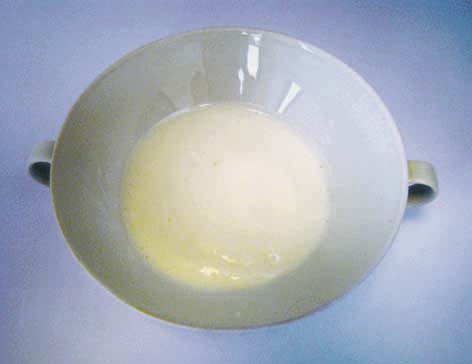 |
2 x 15 mL spoons of low-fat cheese | 54 | 21% |
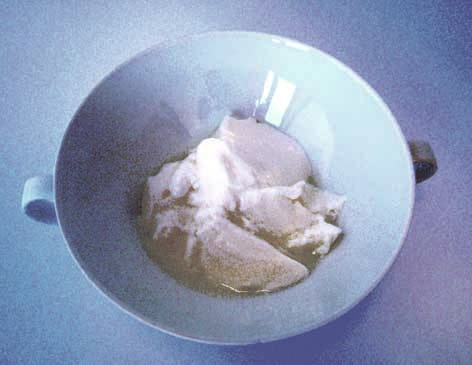 |
2 x 15 mL spoons of yoghurt | 41 | 16% |
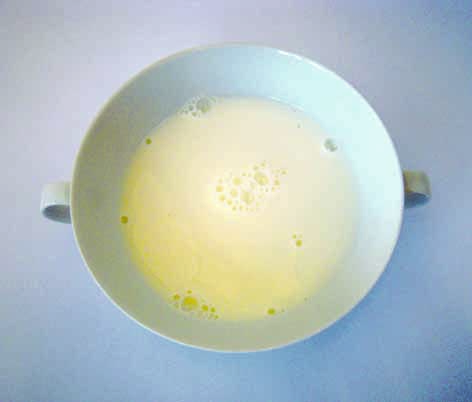 |
100 mL of full-fat milk | 58 | 23% |
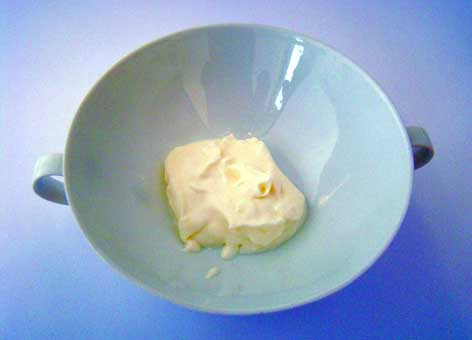 |
25 g of cream | 96 | 38% |
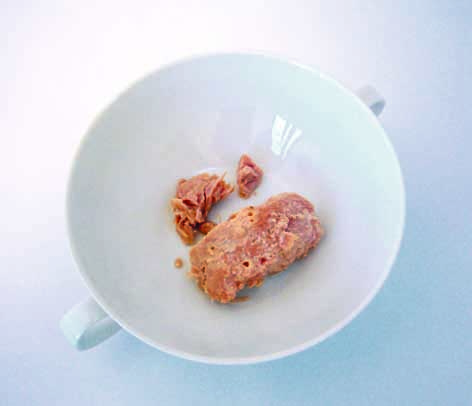 |
25 g of tuna (in brine) | 28 | 11% |
 |
43 g of liver pâté | 154 | 61% |
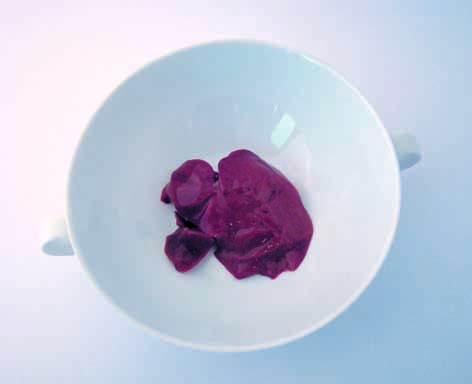 |
25 g of liver | 30 | 12% |
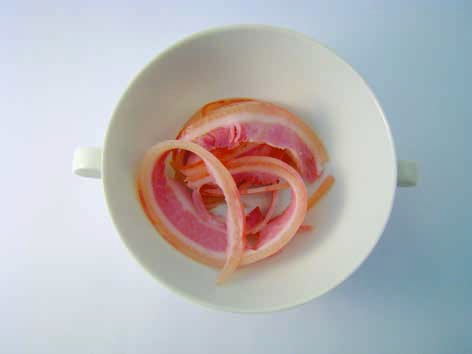 |
30 g of ham rind | 255 | 101% |
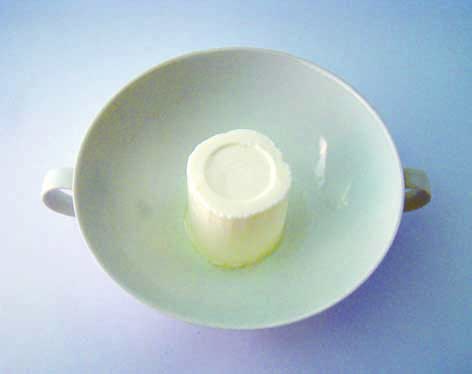 |
60 g of high-fat cream cheese | 62 | 25% |
Many cats will have dry food left in a bowl for the whole day (often without being properly measured out), with wet food being served in addition at certain times. This is usually due to the logistical impossibility of owners being able to serve their cat multiple small meals a day. Unfortunately, this method of feeding means that the owner is unable to properly control how much food the cat eats. Dry food is a product with a high energy concentration, so a small volume of kibble provides a lot of calories. Many owners hope that their pet will know “how much they need to eat” but in most cases cats eat more than they need, and excess energy leads to obesity 15. In addition, many cats will eat to excess because of boredom, as their owners do not provide them with sufficient environmental enrichment or active play.
Dry food does not resemble the consistency or calorific value of the type of food that cats eat in the wild, in that it provides the necessary energy and nutrients in a relatively small portion. This means that some cats will feel hungry even after eating an amount of food that matches their nutritional needs. The situation is different with wet food, which is typically four times less calorific, as it has a water content around 80%. This makes it much more difficult to overfeed a cat. In addition, there are also economic and practical considerations – wet food is more expensive per calorie, so owners are unlikely to offer more than their cat needs, and because wet food deteriorates quickly, owners are more likely to serve measured portions and at fixed times throughout the day.
In particular, owners of cats with a tendency towards excess weight and obesity should refrain from feeding at will, and the daily amount of food should be precisely measured on kitchen scales and then divided into several meals. Meals are best served regularly (i.e., at fixed times during the day), but not only in a bowl – interactive feeding toys should be used on a daily basis as well, as these can contribute to a slower eating pattern and a reduced calorie intake, as well as offering the cat useful mental stimulation (Figure 6).

Figure 6. Daily use of a puzzle feeding toy will give mental stimulation to a cat as well as helping avoid excess calorie intake.
Credit: Shutterstock
It can be surprisingly common for the first opinion veterinarian to encounter clients who hold unexpected views on what their cats should or should not be fed – yet these owners will follow such myths in the belief that they are doing the best for their pet. Clear, unhurried communication between veterinarian and owner, coupled with good educational materials, can help disabuse these myths in many cases and ensure that we can promote the best possible nutrition for pet cats.
Harvey CE, Shofer FS, Laster L. Correlation of diet, other chewing activities and periodontal disease in North American client-owned dogs. J. Vet. Dent. 1996;13:101-105.
Logan EI. Dietary influences on periodontal health in dogs and cats. Vet. Clin. North. Am. Small. Anim. Pract. 2006;36:1385-1401.
Watson AO. Diet and periodontal disease in dogs and cats. Aust. Vet. J. 1994;71(10):313-318.
Buckley C, Colyer A, Skrzywanek M, et al. The impact of home-prepared diets and home oral hygiene on oral health in cats and dogs. Brit. J. Nutr. 2011;106(0):S124-S127.
Gawor JP, Reiter AM, Jodkowska K, et al. Influence of diet on oral health in cats and dogs. J. Nutr. 2006;136:2021S-2023S.
Boyce EN, Logan EI. Oral health assessment in dogs: study design and results. J. Vet. Dent. 1994;11:64-74.
Westfelt E, Rylander H, Dahlen G, et al. The effect of supragingival plaque control on the progression of advanced periodontal disease. J. Clin. Periodontol. 1998;25:536-541.
Niemiec BA. Periodontal therapy. Top. Companion. Anim. Med. 2008;23:81-90.
Logan EI, Finney O, Herrerren JJ. Effects of a dental food on plaque accumulation and gingival health in dogs. J. Vet. Dent. 2002;19(1):15-18.
Niemiec B, Gawor J, Nemec A, et al. World Small Animal Veterinary Association Global Dental Guidelines. J. Small Anim. Pract. 2020;61(7):E120-E125.
Nemec A. The VOHC® seal – what does it mean? Vet. Focus website (https://vetfocus.royalcanin.com/en/scientific/the-vohc-seal-what-does-it-mean) 2021.
Thiry E, Addie D, Belák S, et al. Aujeszky’s Disease / Pseudorabies in Cats: ABCD guidelines on prevention and management. J. Feline Med. Surg. 2013;15(7):555-556.
European Advisory Board on Cat Diseases Web site. Aujeszky‘s Disease – Pseudorabies in cats. Available at: http://www.abcdcatsvets.org/aujeszkys-disease-pseudorabies/ Accessed April 30, 2021
Kienzle E, Bergler R. Human-animal relationship of owners of normal and overweight cats. J. Nutr. 2006;136(7):1947S-1950S.
Rowe E, Browne W, Casey R, et al. Risk factors identified for owner-reported feline obesity at around one year of age: dry diet and indoor lifestyle. Prev. Vet. Med. 2015;121(3-4):273-281.
Karolina Hołda
Dr. Hołda graduated from the Warsaw University of Life Sciences, Poland and went on to undertake further study at the Faculty of Veterinary Medicine in Ghent 더 읽기
임상 현장에서 수의사는 반려동물에게 가정식을 먹이고 싶어 하는 보호자를 만나는 경우가 많다. 이 글에서는 가정식 급여가 가져올 수 있는 잠재적 위험과 유익을 모두 살펴본다.
